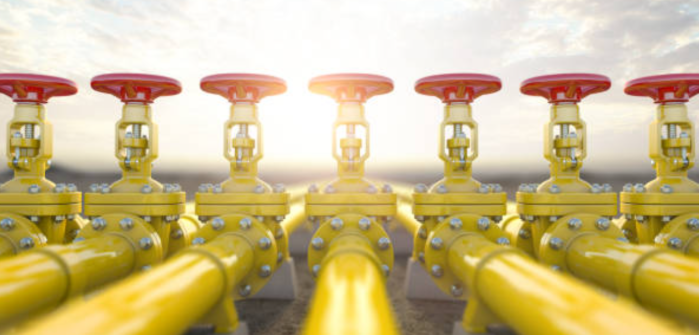There’s something frustrating about water problems you can’t see. A faucet sputters, the shower runs cold halfway through, or your pressure dips for no apparent reason. If you’re using a private well, you know the drill: when things go wrong, you’re kind of on your own.
But here’s the thing—a Canadian water company isn’t just about selling parts or digging wells. It’s about making sure your whole water system actually works the way you expect it to. Quietly. Reliably. Daily.
You don’t think much about water until something breaks. And when it does, you’re either scrambling to fix it or paying too much for someone else to guess.
Pumps First, Because Without One, Nothing Moves
Not all pumps are made equal. People sometimes assume you can just throw in a standard model and call it a day. But that’s not how it works—not if you want steady pressure and a system that lasts more than a few years.
There are submersible, jet, shallow well, and deep well. The wrong one won’t just underperform—it’ll burn out. Or cycle endlessly—or both.
And size matters, too. Some folks get one that’s “close enough,” thinking it’ll save money. Doesn’t really work that way. A pump that’s too big for your system has short cycles. Too small? Low pressure and overwork. You need to know the well depth, how far the water has to travel, how many people live in the house… the whole picture.
It’s not hard math, but it’s not guesswork, either.
Pressure Tanks: Everyone Forgets About Them Until It’s Too Late
Most people don’t even realize what their pressure tank does—until the pump keeps turning on and off a hundred times a day.
Think of the tank as a cushion. It holds pressurized water, so the pump doesn’t have to run every time someone brushes their teeth.
But if it’s too small? The pump kicks on constantly. Too big? You might get delayed pressure and weird flow. And tanks don’t last forever. The bladder inside fails eventually. You won’t notice at first. Then suddenly, nothing’s right. The water pressure’s weird, the pump feels overworked, and the electric bill creeps up.
You start checking Google and thinking, “What even is a pressure switch?” It’s a rabbit hole.
Constant Pressure Isn’t Just Some Fancy Upgrade
You might’ve heard of constant pressure systems. If not, picture this: no pressure drops. Showers stay strong. The washer runs, someone flushes, and no one yells from the bathroom.
These setups use sensors and variable speed drives to adjust pump speed as needed. So, the system adapts. High demand? The pump speeds up. Low demand? It chills. There’s no surge, no drop, just consistent flow.
It’s not a luxury. It’s comfort and control. And fewer mechanical issues long-term.
The Stuff That Doesn’t Show Up on a Parts List
Here’s where experience counts. A good water company doesn’t just look at pipes and wires. They ask questions.
- How many people live here?
- Any irrigation? Livestock?
- Is the house higher than the well?
- What’s winter like in your area?
Some things don’t look like problems at first. Maybe the system was installed OK, but it wasn’t designed for a growing family. Or a new laundry setup. Or five kids, all using water at the same time.
You can’t see that kind of mismatch from the pump label alone.
Smart Systems? Maybe. Sometimes, They Just Make Life Easier
Not everyone wants a screen on everything. But innovative water systems can be helpful, especially when something subtle goes wrong.
Let’s say the pump is cycling way too often. You might not notice. But an intelligent controller does. It logs the data. You check your phone and realize the pump turned on 70 times that day. It could be a small leak. It could be a pressure switch going. But now you know how to look.
Some setups even warn you before freezing is an issue. That’s huge if your well pit or plumbing sits near the frost line. One frozen line can shut the whole system down.
Smart doesn’t have to mean complicated. It just means you see problems early.
Winter Is a Whole Other Problem
A lot of Canadians learn this the hard way—pipes and pumps don’t like cold. If your system isn’t buried deep enough or appropriately protected, you’re one night away from a complete system freeze.
A good water company plans for that. Insulation, frost-proof hydrants, and heated cables were needed. It’s not overkill if it saves you a $2,000 repair in February.
And honestly, even things like how your system drains—whether there’s a spot for water to collect and freeze—can be the difference between fine and wrecked.
What You Actually Get
So, what’s the point of going through a Canadian water company instead of piecing it together yourself from a big box store?
Here’s what you’re really paying for:
- A system that’s designed for your home, not someone else’s.
- Fewer breakdowns because the parts actually match.
- More stable water pressure, even with multiple taps running.
- Less stress when winter hits.
- Fewer surprises—because the system tells you when something’s off.
That kind of reliability? It’s easy to overlook—until you’ve gone without it.
Final Thought
Water is one of those things you just expect to work. And when it doesn’t, it throws everything off. Cooking, cleaning, comfort—it all depends on a system most people never see.
When a system is built right from the start—by people who know what to look for—you don’t have to think about it every day. And that’s the whole point, really.

